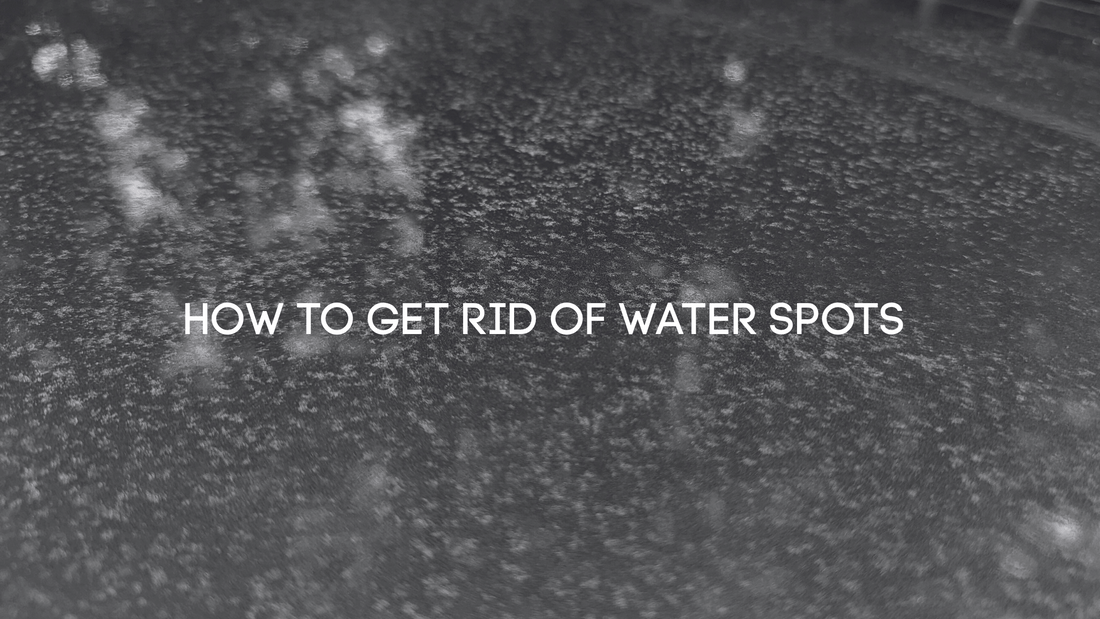Water spots are the bane of any boat owner. These stubborn mineral deposits form when water evaporates on your boat's surface, leaving behind unsightly marks. Not only do they detract from your vessel's appearance, but if left untreated, they can cause long-term damage to your boat's gel coat or paint.
Fortunately, with the right approach, tools, and regular maintenance, you can keep your boat looking pristine while protecting it from future water spots. This guide will walk you through practical methods to remove water spots, recommended products for the task, and maintenance steps to prevent their return—all while keeping environmental impact in mind.
Why Do Water Spots Form?
Water spots are caused by mineral deposits such as calcium, magnesium, and other impurities found in water. When water from lakes, rivers, or saltwater splashes onto your boat and dries, these minerals are left behind, forming white or cloudy spots. The harder the water, the more persistent these marks tend to be.
Boats exposed to sun, wind, and frequent use are particularly susceptible. The good news? With the proper steps, these blemishes can be effectively tackled without harming your boat’s surface.
Step-by-Step Guide to Removing Water Spots
Step 1: Rinse with Fresh Water
Begin by rinsing your boat thoroughly with fresh water. This will help remove loose dirt, debris, and salt that can interfere with the cleaning process. A pressure washer or a standard boat hose with a spray nozzle works well for this initial rinse.
Step 2: Use a Specialized Cleaning Solution
Next, mix a Solution: Combine equal parts of white distilled vinegar and water in a spray bottle or bucket. For stubborn spots, you can use undiluted vinegar. For convenience and optimal results, choose products with gentle, non-abrasive formulas explicitly designed for gel coat, fiberglass, and painted surfaces. Ideally, opt for options that include a built-in sealant or wax for added protection and shine.
Test the solution on a small, inconspicuous area first to ensure it doesn’t damage the boat’s finish.
Spray the cleaner directly onto the affected areas. Allow it to sit for 1–2 minutes to break down the mineral deposits, but avoid letting it dry.
Step 3: Gently Scrub the Surface
Using a soft microfiber cloth or a non-abrasive sponge, gently wipe the spots in a circular motion. For tougher stains, you can use a soft-bristle brush, but be careful not to scratch the surface.
Pro Tip: You must restore protective coatings after using the vinegar mixture mentioned above. We recommend our SRD20 Graphene Spray Protectant due to its hydrophobic formula.
Step 4: Follow Up with a Boat Wash
Once the water spots are removed, wash the entire boat with a pH-neutral boat soap (SRD20 Pink Soap) and a sponge or mop. This ensures any residue from the cleaning solution is rinsed away.
Step 5: Apply a Protective Coating
To guard against future water spots, apply a quality wax or protective coating. Products like our SRD20 Graphene Spray Protectant are effective due to the hydrophobic characteristics of the formula, even on top of professionally applied ceramic coating. If you're using the SRD20 Water Spot Remover with Sealant, it not only eliminates water spots but also forms a hydrophobic barrier, ensuring water effortlessly slides off your boat's surface.
Adding this step to your routine significantly reduces maintenance down the line.
Tips for Preventing Water Spots
While it’s impossible to keep your boat completely free of water exposure, you can minimize water spots with these smart prevention strategies.
Dry Your Boat Immediately After Use
Keep a stash of clean microfiber towels on board and make it a habit to dry your boat after every outing. Pay special attention to areas most prone to water accumulation, such as railings, decks, and windows.
Use a Water Softener or Filter
Hard water exacerbates the buildup of mineral deposits. Consider investing in an inline water softener or filter when rinsing your boat with fresh water post-use.
Store Your Boat Properly
When not in use, store your boat in a covered area, such as a garage, or use a weatherproof cover to shield it from rain and water spray.
Stick to a Regular Maintenance Routine
Schedule regular cleanings and inspections to prevent buildup. Wax your boat’s exterior at least twice a year, or more frequently for boats used in saltwater.
Common Mistakes to Avoid
Taking shortcuts when cleaning your boat can backfire. Watch out for these errors to keep your vessel’s finish intact:
- Skipping the rinse: Jumping straight to cleaning without rinsing dirt and grime can lead to scratches.
- Using abrasive tools or cleaners: These can remove protective coatings, damage the gel coat or paint, leaving dull spots.
- Neglecting protective coatings: Skipping the waxing step makes your boat more vulnerable to immediate spotting.
Final Thoughts
Water spots don’t have to be a permanent blemish on your boat’s beauty. With the right tools, techniques, and preventative measures, you can keep your boat looking as good as the day you bought it.
Make a habit of regular cleaning and apply protective coatings to reduce buildup. Always consider eco-friendly products and ensure proper storage when your boat isn’t in use.
By incorporating these steps into your maintenance routine, you’ll not only enjoy a spotless boat but also extend its lifespan for years to come. Happy boating!

